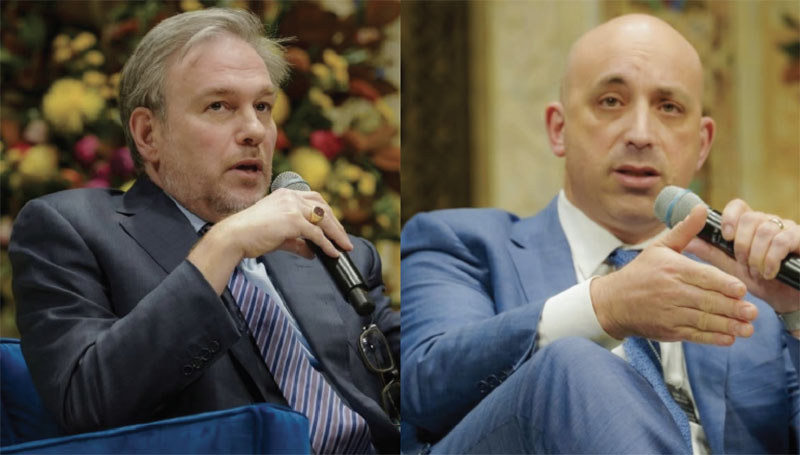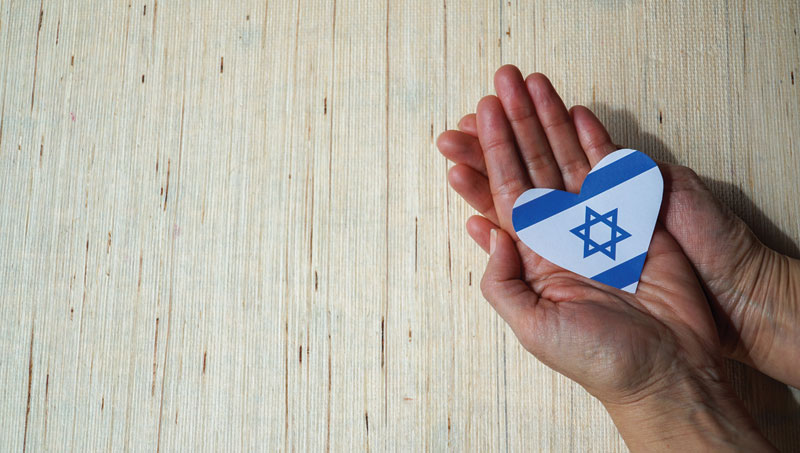Ethan Gura doesn’t remember his sister. Still, he cannot forgether. He can’t forget that Rebecca Alexandra Gura died in 1991 after afour and a half year battle with leukemia. She was then six yearsold. He was three.
Now, at age 9, Ethan is a veteran of various therapies, alldesigned to help him deal with his anger and sense of loss. We mightwonder why someone who faced bereavement so young would continue todwell on it. But Ethan’s earliest recollections are of his parentsleaving him with a babysitter so they could spend hours by hissister’s hospital bed. Their grief is still fresh in his mind, as isthe fact that “they didn’t have time to spend with me.” And he can’tshake the fear that someone else in the family — his parents,himself — might get sick and die. His anxieties have affected hisschoolwork, as well as his interaction with others.
This past summer, the family rabbi suggested a new possibility forEthan: a support group run through the Children’s Bereavement Programof Jewish Big Brothers of Los Angeles.
The Big Brothers organization, which has been in the L.A. areasince 1915, has traditionally focused on the children of singleparent families. But since 1994, it has been reaching out to Jewishyoungsters who have suffered the death of a loved one. Under thedirection of Julie Gould, a licensed clinical social worker, thesekids come together for eight weeks of intensive sessions in whichthey use art, games, and storytelling to get a handle on theirfeelings.
The groups are limited to Jewish children because a discussion ofJewish burial and mourning customs is part of the mix. The mainthrust of the group is not to endorse the Jewish way in death andmourning (to borrow the title from Rabbi Maurice Lamm’s classic bookon the subject). Rather it is to help children lessen their ownfeeling of isolation by showing them that others, too, are strugglingto cope with similar emotions. Another key goal is to give childrenthe tools to move beyond their loss.
At the end of his eight-week program, Ethan seemed eager to sharewith me what his bereavement group was like. He joined in willingly,because “I had so many feelings I couldn’t get out. I didn’t want tobe sad all the time.” But how did he feel about being grouped withchildren who ranged in age from six to 12? On a school playground,kids of different ages don’t normally mingle in friendly fashion. Butwithin the group Ethan found a common bond: “They all had somethingthat was sad and different about them . . . they had the samesadness.” This despite the fact that their losses were not identical.Two children had lost parents; one was mourning a dead grandfather.Ethan matter-of-factly explained that one girl’s mother had died fromtaking drugs; one boy’s best friend had succumbed to a brain tumor.
Ethan remembers art projects , journal writing, and “coolactivities.” A particular favorite was “jumping on bubble paper toget out our anger.” He also discovered that writing was a therapeuticway to soothe turbulent emotions. At one session, the kids learnedthat death comes in many forms. That day “I drew a picture aboutthings people could die from,” including drugs, guns, and carcrashes, “like Princess Diana.”
A highlight of the eight weeks is the Cloud Trip, which starts aswhat therapists call a “guided imagery exercise.” The kids lie on thefloor, close their eyes, and go on an imaginary journey with theirloved one. They ride in a vehicle of their own choosing (Ethan pickeda motor scooter), and travel through a fantasy environment which maybe their personal interpretation of Heaven. They enjoy one another’scompany in these magical surroundings, then quietly say good-bye.Next the children separate, and on huge sheets of paper, draw thescenarios they’ve envisioned. At length, they re-assemble to sharethe fruits of their imaginings.
When I talked to Ethan, he seemed serene in his acceptance of whathad happened to his sister. He calmly explained how he used to fearthat his mother would suffer Rebecca’s fate, but that now heunderstands better how such things work. He’s planning to tell hisyounger brother about Rebecca, but sagely notes that Alexander, atthree, is still too young to comprehend that death is a part of life.Maybe when he’s four or five. . . .
I doubt (as do Ethan’s parents) that the Jewish Big Brothersprogram will wipe away all of his anxieties. There is, for one thing,no money budgeted to follow up on a child’s progress six months afterhis group has held its celebratory last-session pizza party. But itseems clear that Big Brothers has given Ethan a soothing newperspective on something that (in the words of his father Dennis)”he’ll be processing till he’s an adult.”
Bereavement is very much in the news as I write this, and thebroad consensus is that the stiff-upper-lip approach to loss is nothealthy for anyone. It’s encouraging that the Jewish traditionsanctions the sharing of sorrow: Rabbi Lamm’s “The Jewish Way ofDeath and Mourning” in fact makes clear that Judaism encourages openexpressions of grief, within the context of the ancient rituals. ButLamm’s book, like most others which discuss death from a Jewishperspective, is no help to a child who’s looking for ways to copewith an adult-sized sorrow. I’m glad that Jewish Big Brothers hasstepped forward to help children like Ethan acknowledge their painand move on.
Beverly Gray writes about education from Santa Monica.
All rights reserved by author.






















 More news and opinions than at a Shabbat dinner, right in your inbox.
More news and opinions than at a Shabbat dinner, right in your inbox.